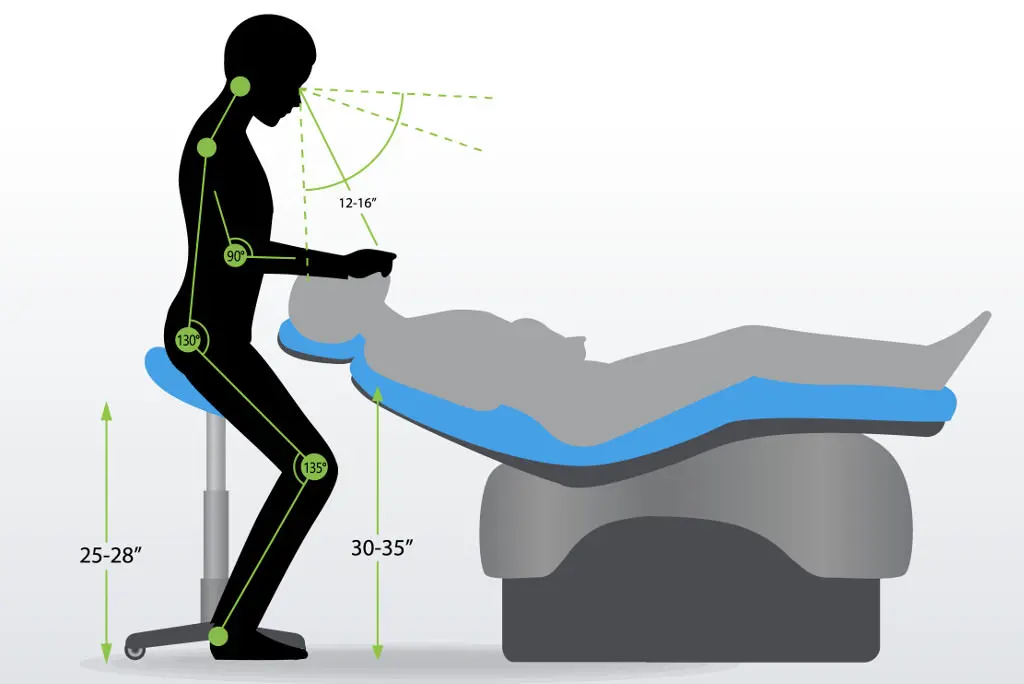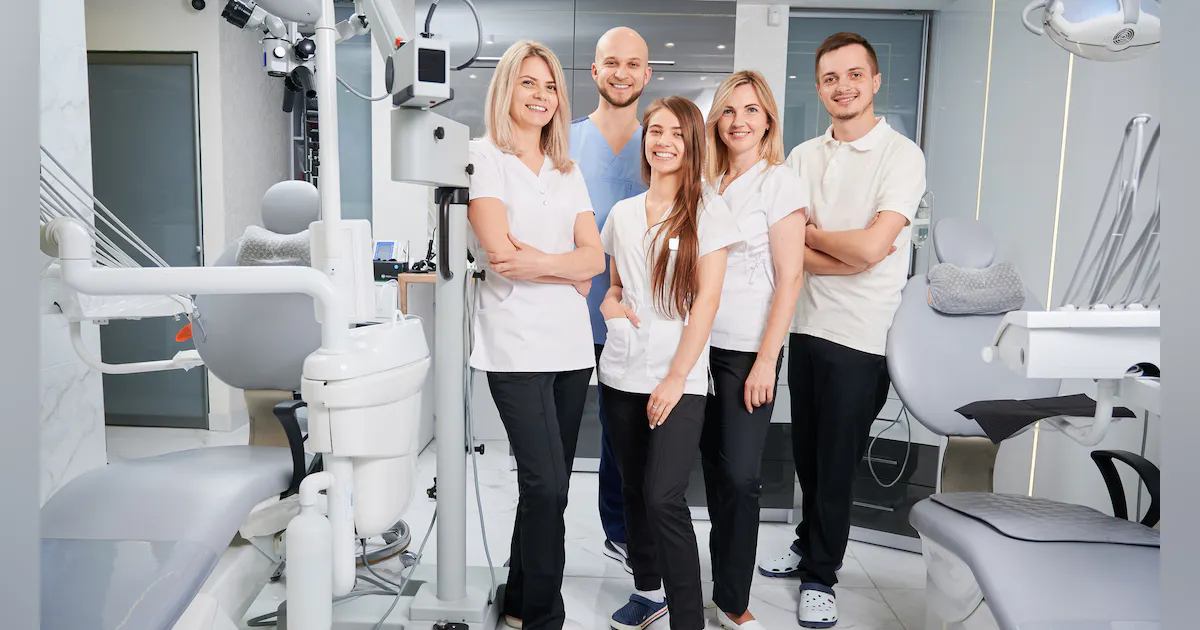There is no doubt that the economy has impacted, to varying degrees, almost all dental teams and patients. People just are not spending money like they have in the past. They have become more cautious and conservative. The financial environment has increased savings from 2% to 3%, which is good for individuals but bad for the economy. In response, dental teams can—and should be—committed to marketing and finding other ways to increase revenue. On the other side of the revenue coin, they should also identify opportunities to lower overhead. The three ways to better manage are:
• Reduce overhead by installing and using strong and efficient systems • Market more effectively and add services • Master better sales skills
Today, a general dentist’s overhead averages 75% of income. So for every dollar that is brought into the practice, only 25 cents is net income to the dentist. Unfortunately, if the practice experiences a drop in collections by 10%, there will be a dramatic decrease in net income of about 40%. That is significant!
Your overhead percentage is a choice. When times were good, a 25% net was certainly acceptable. However, you can deliver excellent care with a 55% overhead. Why not operate at a much lower overhead so when times are tight, you are still feeling rewarded? Overhead is the leader’s choice of how to operate. What is your choice?
Overhead choices in staffing decisions:
The largest overhead cost is staff. This includes salaries, worker’s compensation, payroll taxes, and medical insurance. In the average practice, team costs represents about 30% of total income.
The next largest expense is laboratory fees, followed by supplies, rent, equipment leases, and miscellaneous items such as continuing education, insurance, utilities and the phone bill.
Breakdown of Overhead Costs As Percent of Income
| Overhead | Average | Ideal |
|---|---|---|
| Staff | 30% | 15-20% |
| Lab | 8% | 10%+ |
| Rent | 3-5% | 3-5% |
| Equipment | 3-5% | 3-5% |
| Office Supplies | 1-2% | 2% |
| Dental Supplies | 5-6% | 5-6% |
| Marketing | 0% | 10% |
| Misc | X | X |
| TOTAL | 75% | 55% |
When most dentists seek to lower overhead, they look to cut areas that have almost insignificant impact on net income. They worry about their supply bill and try to find needed supplies at a discount. After hours of searching and negotiating, dentists may save 20% of their 5% supply bill. If the practice bills $1 million, this 20% savings will result in a whopping 1% total reduction in overall expenses, increasing annual net income only $10,000. Of course, a few percents can add up, but doctors should start in the areas where savings will contribute most to the bottom line.
Install good systems and train your team:
The best way to decrease overhead is to have strong systems in place. A system is a “standard operating procedure” that the team does repetitively and is documented so each person can easily do the job. By not having systems, one is not able to train an individual to be efficient and effective, so the dentist hires a helper for the untrained person, hence raising the staff overhead over 20%.
Without these systems, the practice changes procedures and protocol every time there is a change in personnel. As a consultant, I often hear a doctor or team member comment, “we used to do it this way but gradually moved away from it for no real reason.”
Because most dentists do not have systems, they do not train teams and their teams cannot, therefore, be effective and efficient. This is why staff costs for most practices are 30% of income, when they could easily be 20% or less. If the same practice that does about $1million reduces staff costs from 30% to 20%, net income will increase by $100,000.
This is not about understaffing because your team is critical to patient care, patient satisfaction and practice’s success. What this is about is creating systems and providing training that enables each member of your team to be more efficient and effective. This will naturally reduce the number of people needed to deliver quality care to patients.
Putting systems in place does not have to be a difficult and arduous task. There are resources available to help in both of these areas.
The key point is that the doctor is the one who decides how every aspect of the practice is run—from telephone communication skills scheduling, patient retention, financial policies and recall, not just the clinical side. The doctor’s preferences must be put in writing, so the team understands and can follow those protocols. It is also important to have standard operating systems and protocols in the clinical area as well. An example would be in hygiene where the treatment protocol and standard of care is decided by the current hygiene personnel, rather than the Doctor. All clinical protocol should be defined by the Doctor, the leader. The doctor’s preferences must be put in writing, so that the team understands and can follow those protocols.
The doctor should set aside formal time for training. Usually, it works better if an outside consultant conducts this training of systems. A consultant brings a much broader background from experience in many offices. A doctor does not have to constantly reinvent the wheel. Once these systems are in place, every team member is trained so he/she can perform the task in the appropriate manner and be accountable for the consistent results.
One of the first places to invest in training is improving telephone communication skills through scripts and role playing. I have found about 65% of receptionists in dental practices I have observed do not ask the patient if they would like to set an appointment to come in for care.
Instead, the conversation concludes with “Do you have any other questions? No? Great. Thank you for calling.” This is like going to a restaurant, looking at a menu, and having a waiter ask, “Do you have any questions on the menu? No? Great. Thanks for coming in.” The waiter then walks away without asking for an order. Good communication skills are a learned behavior that requires systems (scripts) and training.
Having systems and training also minimizes the chaos when someone calls in sick, leaves on vacation, or leaves the practice permanently. If systems are written, anyone should be able to fill that role effectively with little disruption to patient care.
Increase lab costs:
The next way to decrease overhead is by increasing the lab bill to 10% or more. This may seem counterintuitive, but it’s not.
I know a man who owns and operates a plumbing shop of 150 employees and he nets over $1 million. He invests in training so he can decide how his customers are to be treated rather than leaving the success of his company to chance. He has systems and scripts for everything and all employees have been trained on how he wants them to interact with customers. If there is a call to fix a leaky faucet, the interaction is handled consistently by every plumber, every time: “Mrs. Jones, you have a leaking faucet and we can fix that for you. Do you know how old this faucet is? Was it here when you bought your house?”“Yes, and that was 11 years ago!” “Well, we’re happy to repair it but I want you to know it may cost almost as much to repair it as to replace it with a new one. Have you considered upgrading this faucet? And, are there other faucets in your home I could help you with while I’m here to save you the cost and hassle when another one starts leaking? Let me show you what we have available.”
So, let’s look at what this plumber does and apply it to dentistry. Today, 95% of all crown and bridge is done one tooth at a time, which is inefficient for the patient and the practice. Instead, if you used systems and proven scripts that help the patient tie into the emotional benefits of more complete dentistry, it would positively change the patient care dialogue.
“Mrs. Jones, we can certainly fix that broken tooth. But, did you know the one right behind it is in the same shape? It hasn’t broken yet, but looks like it will. I can fix that other tooth today, while you’re here, while you’re numb to save you the time, hassle, and the pain of coming back when it does break.”
With this simple script, the dentist or trained team member has a conversation which communicates to the patient that additional care is possible and they can save time and money by getting it done now. Better yet, with every team member trained on these scripts (one of several), the dentist can focus on the treatment. The team now knows the standard of care and protocols and is confident in having these conversations with the patient. The doctor gets to do that second crown, which will automatically increase his lab bill by $200. Because the doctor is not paying any more for space, equipment, or salaries, he has effectively increased net income by $1,000 on that single appoint. The net triples when you do multiple units.
Part of the standard procedure of speaking with a patient by a team member is to ask about the patient’s budget early in the conversation. Regular practice and role playing is the only way these conversations will happen.
When you put systems and training in place that enables you and your team to do more than single tooth dentistry, you need to also be ready to help your patients financially. One way to enable patients to receive care while they are in the hair is to offer payment solutions, such as CareCredit, before you do an examination.
Because you pay a small fee when the patient uses CareCredit, many doctors believe this increases overhead. But remember Mrs. Jones and the crown example. If offering financing enables Mrs. Jones to fix both teeth in a single visit, and you pay about 5% to the financing company, you still gain $950 in additional income.
Marketing and other Overhead Considerations
Another overhead area that needs to be a priority is marketing. Practices should consistently reinvest 3% to 10% of their collections into marketing to attract new patients and retain existing ones. An updated website with search engine optimization is a must. Social media is where it is happening. Announce your new skills and offerings with a weekly blog. You create your own excitement.
In times when patients are holding on to their money, they are still making choices where to spend their earnings. If the dental office wants to be high on the priority list for spending, one must increase the marketing activities. A dental office’s success depends on the steady flow of new patients. We must not just rely on internal referrals but actively market on the web, direct mail and other forms of media to maintain a healthy new patient flow.
Without marketing, your new patient flow will evaporate and your overhead will effectively increase because you will have the same fixed and staff costs but will be doing less dentistry.
The other areas of overhead such as rent and equipment leases are contractual and there is little you can do to change these costs until it is time to renew. Overhead is a choice on the variable costs of staff and lab.
Within the miscellaneous expense category, you may find opportunity for savings, and should explore those. But none will impact net income as much as decreasing staff costs to 20% through systems and training with a solid bonus incentive. Savings can also be found by increasing lab costs from doing more than single tooth dentistry. This happens with team training on sales skills. Overhead can also be reduced by increasing the marketing budget.
These are the areas on which to focus efforts to help minimize the current economy’s impact on income and to mitigate the effect of any future economic downturns. Overhead is the leader’s choice. Make yours 55% with bold decisions and team training.












